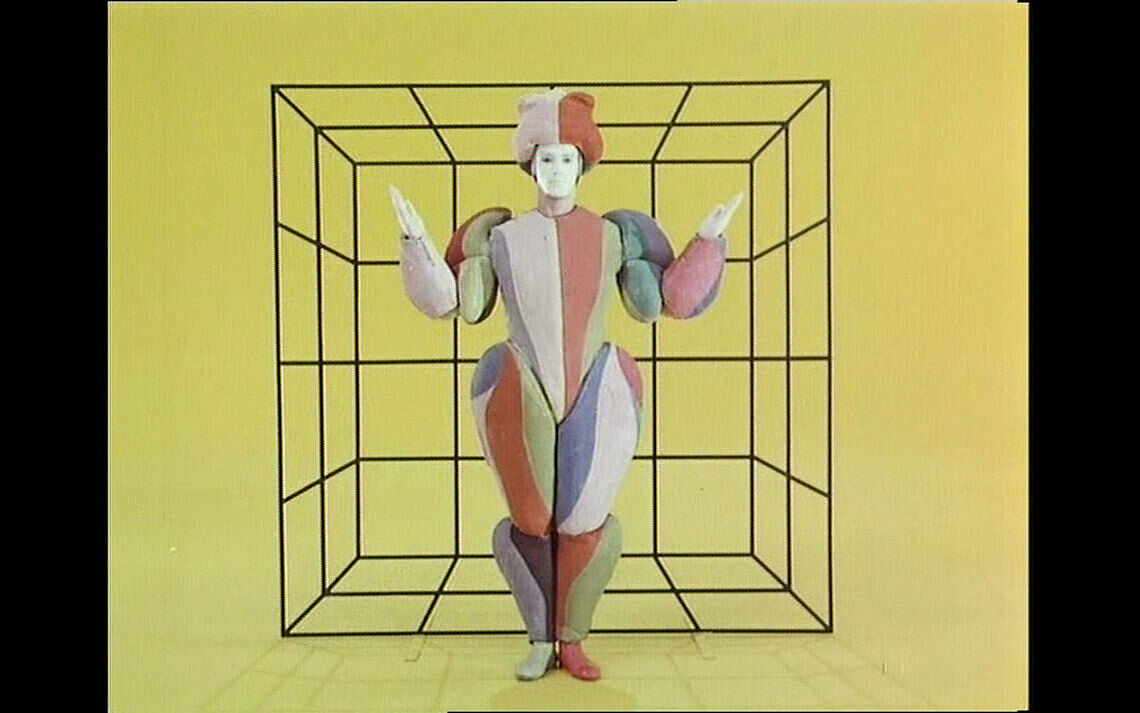Dreamlands: Immersive Cinema and Art, 1905–2016 | Art & Artists
Oct 28, 2016–Feb 5, 2017
Dreamlands: Immersive Cinema and Art, 1905–2016 | Art & Artists
Oskar Schlemmer
60
Das Triadische Ballett [Triadic Ballet] is a dance that was created in 1922 by the German painter and director of the Bauhaus Theater Workshop Oskar Schlemmer. In each of its three parts a single color defines the set, creating a cubic abstract space. The dancers move like marionettes in restrictive costumes evoking prosthetic limbs, the military, diving suits, dolls, and elemental shapes. The artifice of the dancers’ mechanical actions echoes the graphic flatness of the set. The dance, Schlemmer explained, was intended to “convert and transfigure space through form, color, and light.”
Schlemmer’s desire to produce a modern immersive Gesamkunstwerk—or total work of art—was shared by many of his contemporaries in Weimar Germany. This exceptionally creative period was a kind of laboratory for ideas addressing the sensation of space, abstracted forms, the body, and technology that migrated between Germany and America, and can be seen throughout the exhibition.
The Triadic Ballet premiered in Stuttgart, Germany, in 1922, and has been restaged numerous times, in different iterations. It remains a touchstone of abstract dance and theater.

